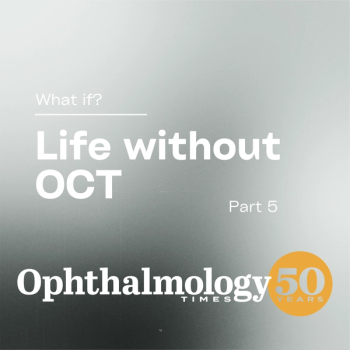
Study finds caffeine boosts inner retinal activity in young adults
Because the inner retinal function is thought to affect the emmetropization process, authors suggested that caffeine may be involved in ocular growth
A recent study showed that oral caffeine intake increased the inner electro-retinal activity in young adults while viewing high- to medium-contrast stimuli. Because the inner retinal function is thought to affect the emmetropization process, the study authors led by Jesús Vera, PhD, suggested that caffeine may be involved in ocular growth.1 He is from the Clinical and Laboratory Applications of Research in Optometry Research Group, Department of Optics, Faculty of Sciences, University of Granada, Spain, and the New England College of Optometry, Boston.
Vera and colleagues based their study on published evidence indicating the potential value of caffeine and its derivatives to control myopia in humans2-6 and the validity of the global-flash multifocal electroretinogram (gfmERG) response to assess the retinal mechanisms associated with the emmetropization cascade.7-12
“We hypothesized that acute caffeine ingestion would lead to greater inner retinal activity in comparison to placebo intake, as shown for other myopia control strategies such as atropine and dual-focus contact lenses.13-15 Also, it is plausible to expect that these effects would be dependent on the stimulus contrasts and retinal eccentricity, as shown for other myopia control strategies such as atropine and dual-focus contact lenses,”13-15 they commented.
Vera and colleagues conducted a placebo-controlled, double-masked, balanced crossover study to determine the acute effect of 300 mg of caffeine on the retinal responses that were measured with a gfmERG protocol at different contrast levels.
Twenty-four adults (mean age, 23.3 ± 2.4 years) were included. On 2 separate days, they ingested caffeine or placebo, and the retinal responses were recorded 90 minutes later using a gfmERG at the 95%, 50%, and 29% contrast levels. The amplitude response density and peak time of the direct and induced components (direct component [DC] and induced component [IC], respectively) were extracted for 5 different eccentricities (1.3°, 5.0°, 9.6°, 15.2°, and 21.9°), Vera explained.
gfmERG results
The investigators observed increased IC amplitude response density following caffeine ingestion compared to placebo (P = 0.021, ƞp2 = 0.23), for the 95% and 50% stimulus contrasts (P = 0.024 and 0.018, respectively). This effect was independent of the retinal eccentricity (P = 0.556). Caffeine did not affect the DC amplitude response density or DC and IC peak times, they reported.
The investigators concluded, “Our results imply that 300 mg of orally ingested caffeine increases the inner electroretinal activity when viewing stimuli of high (95%) to medium contrast (50%) in young adults, with these effects being independent of retinal eccentricity. Future research is needed to explore the clinical applications of caffeine and other adenosine receptor antagonists for modulating the inner retinal function.”
References
Vera J, Redondo B, Vera-Diaz FA, Panorgias A. Acute effects of oral caffeine intake on human global-flash mfERG responses: a placebo-controlled, double-masked, balanced crossover study. Invest Ophthalmol Vis Sci. 2024;65:10; doi:
https://doi.org/10.1167/iovs.65.11.10 Trier K, Ribel-Madsen S., Cui D, Christensen S. Systemic 7-methylxanthine in retarding axial eye growth and myopia progression: a 36-month pilot study. J Ocul Biol Dis Informatics. 2008;1:85–93.
Trier K, Cui D, Ribel-Madsen S, Guggenheim J. Oral administration of caffeine metabolite 7-methylxanthine is associated with slowed myopia progression in Danish children. Br J Ophthalmol. 2023;107:1538–1544.
Smith EL, Hung LF, She Z, eta l. Topically instilled caffeine selectively alters emmetropizing responses in infant rhesus monkeys. Exp Eye Res. 2021;203:108438.
Lai L, Trier K, Cui D. Role of 7-methylxanthine in myopia prevention and control : a mini-review. Int J Ophthalmol. 2023;16:969–976.
Vutipongsatorn K, Yokoi T, Ohno-Matsui K. Current and emerging pharmaceutical interventions for myopia. Br J Ophthalmol. 2019;103:1539–1548.
Chen JC, Brown B, Schmid KL. Evaluation of inner retinal function in myopia using oscillatory potentials of the multifocal electroretinogram. Vis Res. 2006;46: 4096–4103.
Chen JC, Brown B, Schmid KL. Retinal adaptation responses revealed by global flash multifocal electroretinogram are dependent on the degree of myopic refractive error. Vis Res.2006;46:3413–3421.
Gupta SK, Chakraborty R, Verkicharla PK. Electroretinogram responses in myopia: a review. Doc Ophthalmol. 2022;145:77–95.
Li SZC, Yu WY, Choi KY, et al. Subclinical decrease in central inner retinal activity is associated with myopia development in children. Invest Ophthalmol Vis Sci. 2017;58:4019–4026.
Ho W-C, Ng YF, Chu PHW, et al. Impairment of retinal adaptive circuitry in the myopic eye. Vis Res. 2011;51:367–375.
Ho W, Kee CS, Chan HHL. Myopic children have central reduction in high contrast multifocal ERG response, while adults have paracentral reduction in low contrast response. Invest Ophthalmol Vis Sci. 2012;53:3695–3702.
Fung MMY, Choi KY, Chan HHL. The effect of simultaneous dual-focus integration on the global flash multifocal electroretinogram in the human eye. Ophthalmic Physiol Opt. 2021;41:171–178.
Turnbull PRK, Goodman LK, Phillips JR. Dual-focus contact lenses for myopia control modify central retinal electrophysiology in humans. Ophthalmic Physiol Opt. 2023;43:1100–1109.
Khanal S, Turnbull PRK, Lee N, Phillips JR. The effect of atropine on human global flash mfERG responses to retinal defocus. Invest Ophthalmol Vis Sci. 2019;60:218–225.
Newsletter
Don’t miss out—get Ophthalmology Times updates on the latest clinical advancements and expert interviews, straight to your inbox.



















































.png)


